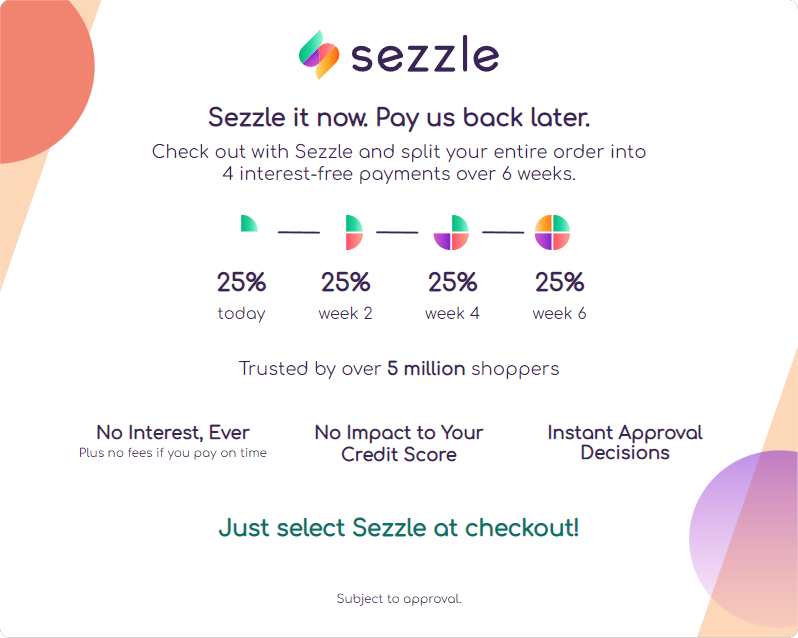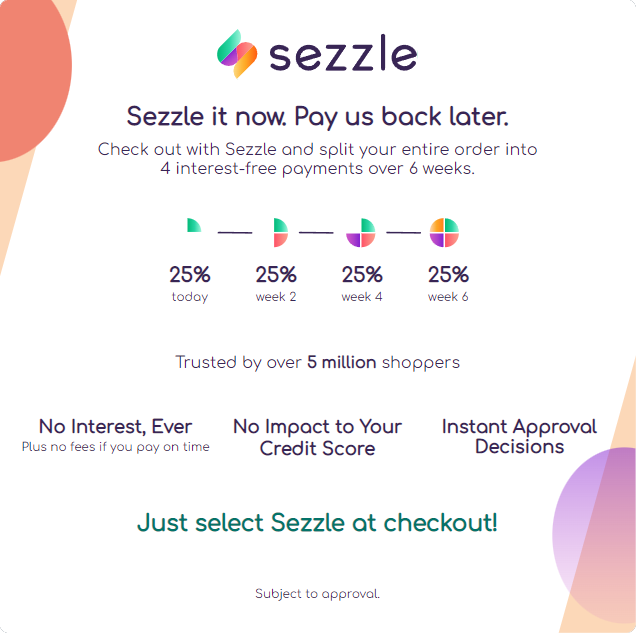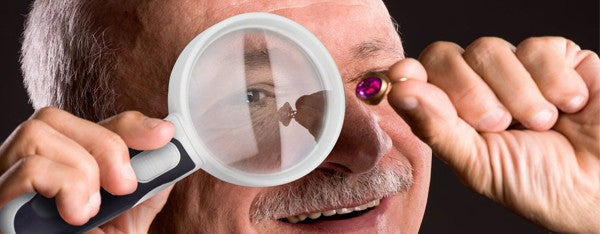



We provide a 24-month warranty on all of our products.

We take immense pride in our products and know you're going to love them as much as we do. If you're not 10/10 obsessed, let us know within 30 days for our 100% money back guarantee.

 ✕
✕
Check out with Sezzle and split your entire order into 4 interest-free payments over 6 weeks.
On all orders $90USD+ we offer free 2-7 business day standard shipping in the US + CA and 11-20 business day shipping in the UK.
Unfortunately we are unable to make deliveries to PO boxes, APO/FPO, or US military bases outside the US.

 Taylor LED Compact Mirror
Taylor LED Compact Mirror
 Vera Vanity with 10x Lara Mirror
Vera Vanity with 10x Lara Mirror
 Rivo Nano Ionic Facial Steamer
Rivo Nano Ionic Facial Steamer
 Abigail LED Travel Mirror
Abigail LED Travel Mirror
 Mini Taylor LED Compact Mirror
Mini Taylor LED Compact Mirror
 Ultimate Mirror Bundle
Ultimate Mirror Bundle
 Abigail 10x Travel Mirror
Abigail 10x Travel Mirror
 Mila 2 Luxe LED Compact Mirror
Mila 2 Luxe LED Compact Mirror
 Tru-Glow Lighted Mirrors Duo
Tru-Glow Lighted Mirrors Duo
 Clara Microdermabrasion Device
Clara Microdermabrasion Device
 Jingle and Glow Kit
Jingle and Glow Kit
 Cali Electric Callus Remover
Cali Electric Callus Remover
 Isla Facial Cleansing Brush
Isla Facial Cleansing Brush
 Madison Makeup Case
Madison Makeup Case
 The Glow Getter Ritual Set
The Glow Getter Ritual Set
 Mila 2 LED Compact Mirror
Mila 2 LED Compact Mirror
 Madeline Mini Hollywood Mirror
Madeline Mini Hollywood Mirror
 Mini Taylor LED Compact Mirror | Romantic Florals
Mini Taylor LED Compact Mirror | Romantic Florals
 Vera Lighted Vanity Mirror
Vera Lighted Vanity Mirror
 Lana 10x Magnifying Mirror
Lana 10x Magnifying Mirror
 Juni 2 Lighted Car Visor Mirror
Juni 2 Lighted Car Visor Mirror
 Taylor LED Compact Mirror | Cheetah Chic
Taylor LED Compact Mirror | Cheetah Chic
 Mini Taylor LED Compact Mirror | Cosmic Leopard
Mini Taylor LED Compact Mirror | Cosmic Leopard
 Soft & Smooth Body Kit
Soft & Smooth Body Kit
 Cami Lighted Handheld Mirror
Cami Lighted Handheld Mirror
 Pore-Parazzi Set
Pore-Parazzi Set
 2 Be Lit Mirror Duo
2 Be Lit Mirror Duo
 Aria Pro Makeup Brush Set
Aria Pro Makeup Brush Set
 Love at First Light Mirror Set
Love at First Light Mirror Set
 Daily Essentials Skincare Kit
Daily Essentials Skincare Kit
 Taylor LED Compact Mirror | Blush Zebra
Taylor LED Compact Mirror | Blush Zebra
 Glowing Places Kit
Glowing Places Kit
 Mini Taylor LED Compact Mirror | Cheetah Chic
Mini Taylor LED Compact Mirror | Cheetah Chic
 Mini Taylor LED Compact Mirror | Blush Zebra
Mini Taylor LED Compact Mirror | Blush Zebra
 Monroe Hollywood Vanity Mirror
Monroe Hollywood Vanity Mirror
 Mira 2 Magnifying Mirror 10x
Mira 2 Magnifying Mirror 10x
 Farah Makeup Remover Set
Farah Makeup Remover Set
 Remi Uplift Facial Massage Roller
Remi Uplift Facial Massage Roller
 Macy Makeup Bag
Macy Makeup Bag
 Avery Spa Headband Set
Avery Spa Headband Set
 Harper Makeup Sponge Set
Harper Makeup Sponge Set
 Tara 10x Magnifying Mirror
Tara 10x Magnifying Mirror
 Leather Pouch for Compact Mirror
Leather Pouch for Compact Mirror
 Tasha Heated Eyelash Curler
Tasha Heated Eyelash Curler
 Charlotte Scalp Massager
Charlotte Scalp Massager
 Lara 10x Magnifying Mirror for Vera
Lara 10x Magnifying Mirror for Vera
 Zoe Drying Pads
Zoe Drying Pads
 Traveling Twosome
Traveling Twosome
 Tala Gooseneck Attachment for Mira
Tala Gooseneck Attachment for Mira
![Gift Card [USD]](http://fancii.ca/cdn/shop/products/fancii-gift-card_45x.gif?v=1762198925) Gift Card [USD]
Gift Card [USD]
![Gift Card [CAD]](http://fancii.ca/cdn/shop/products/fancii-gift-card_8caf3995-16f8-44ab-90b2-3aa4b3050424_45x.gif?v=1762269131) Gift Card [CAD]
Gift Card [CAD]
![Gift Card [GBP]](http://fancii.ca/cdn/shop/products/fancii-gift-card_bda6bc27-1ef2-4efb-bf94-e3f8882f7d97_45x.gif?v=1762269131) Gift Card [GBP]
Gift Card [GBP]
 Cora 3 Facial Cleansing Brush
Cora 3 Facial Cleansing Brush
 Elle Satin Scrunchie
Elle Satin Scrunchie
 Mini Taylor LED Compact Mirror | Meadow
Mini Taylor LED Compact Mirror | Meadow
 Mini Taylor LED Compact Mirror | Mediterranean Coast
Mini Taylor LED Compact Mirror | Mediterranean Coast
 Glowcation Station
Glowcation Station
 Taylor LED Compact Mirror | Cosmic Leopard
Taylor LED Compact Mirror | Cosmic Leopard

The magnification of a magnifying glass depends entirely on where it is placed between the user's eye and the object in focus, and the total distance between them. The magnifying power is equivalent to angular magnification. The magnifying power is the ratio of the sizes of the images formed on the user's retina with and without the lens. In the case of without lens, it is generally assumed that the user would bring the object as close to the eye as possible without it becoming blurry. This point is known as the near point, and it varies with age. A young child can have a near point as close as 5 cm, while an elderly individual may be as far as one or two meters. Magnifying glasses are typically characterized using a "standard" value of 0.25 m.
The highest magnifying power is obtained by holding the lens very close to the eye and moving the eye and the lens together to obtain the sharpest image. The object will often be close to the lens. Magnifying glasses are not always used this way. Some people find it much more comfortable to put the magnifying glass close to the object (one focal length away). The eye can then be a larger distance away, and a focused image can be obtained quite easily; the focus is not very sensitive to the eye's exact position.
A typical magnifier might have a focal length of 25 cm, corresponding to an optical power of 4 dioptres. Such a magnifier would be sold as a "2X" magnifying glass. In reality, an observer with "typical" eyes would obtain a magnifying power between 1 and 2, depending on where the lens is held.
Using this principle, a magnifying glass can then be used to focus light, specifically to concentrate the sun's beam to create a hot spot at the focus. Check this video out on YouTube.